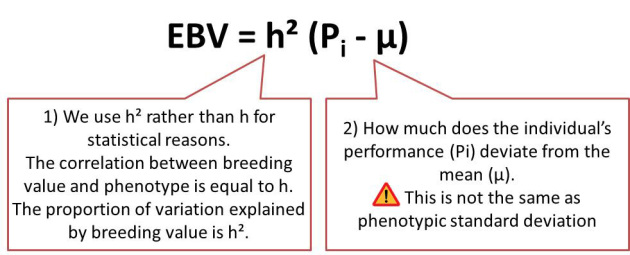Genetic evaluation: Estimated breeding value/Definition
First, terms associated with genetic value must be described:
Genetic value is the effect the genes of the animal have on its production.
Breeding value has the same meaning except that it is more likely to be used to describe the effects of genes the animal can pass on to its progeny.
Transmitted ability is often used as a substitute for one-half breeding value. Indeed, an animal can pass on only a sample one-half of its genes to its offspring.
True genetic value (TBV) is never known exactly, we cannot see genes and breeding values. So we must use observed phenotypes to obtain estimated genetic value (EBV) and estimated transmitting ability (ETA).
The most obvious piece of phenotypic information we can use is the animal's own phenotype. But we can also use information from relatives, such as the sire, the dam, siblings and progeny.
The principle of breeding value estimation is based on regression → We want to know differences in breeding value based on observed differences in phenotype.
If we regress breeding values on phenotypic observations, the slope of the regression line tells us how much difference we have in breeding values per unit of difference in phenotype.






